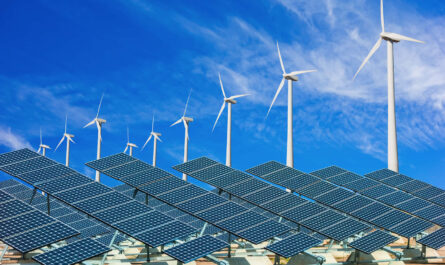Hydropower plays a vital role in electricity generation by utilizing the power of flowing water through water turbines. A water turbine converts kinetic energy from moving water into rotational mechanical energy to generate electricity. Several different types of water turbines are used in hydropower plants depending on the water flow, head, and other parameters of the hydropower project. Let’s explore the world of water turbines in detail.
Types of Water Turbines
There are two main types of water turbines based on their orientation relative to the water flow – impulse and reaction turbines.
Impulse Turbines
Impulse turbines utilize the velocity of water jets striking movable blades to produce mechanical motion. Pelton wheels are a common variety of impulse turbine suitable for high head applications with a relatively small amount of water flow. The fast moving water jets impact on the scoop-shaped blades of Pelton wheels mounted on a central shaft inside a cylindrical casing.
Pelton wheels can be highly efficient, up to 95% for large units, making them ideal for high head sites. Their ability to handle varying load conditions also make them popular for peaking power plants. Kaplan turbines are a type of bulb turbine suited for lower head sites with higher water flow. They operate on the reaction principle with stationary blades and adjustable wicket gates.
Reaction Turbines
In reaction turbines, the entire body of water acts on the blades which are positioned in the flow channel and rotate due to the reaction of the water on the profiles of the stationary and moving blades. Francis turbines are the most common type of reaction water turbine used today. They feature a spiral casing, runner with two sets of adjustable wicket gates and stationary stay vanes, and a draft tube to recover kinetic energy.
Francis turbines are highly versatile and suitable for a wide range of heads and flows, allowing their use in both large storage projects as well as small to medium sized run-of-river schemes. Propeller turbines resemble large ship propellers mounted in a housing with adjustable guide vanes. Used primarily for tidal power plants, they are efficient at low heads with large flows but prone to cavitation issues.
Water Turbine Design and Operation
Modern Water Turbines are precisely engineered machines designed for optimal efficiency based on the specific hydraulic conditions of the hydropower site. Key design parameters include number of blades, blade shape and profile, runner diameter, wicket gate and stay vane angles. Advanced computational fluid dynamic modeling is used during the design phase to optimize pressure and velocity distributions.
Careful machining and balancing ensures smooth vibration-free operation even at high speeds. Control systems adjust the wicket gates and runner blades according to the load demand and water flow conditions to maintain high efficiency over a wide operating range. Generators coupled to the turbine shaft convert its rotational energy into electric power which is then fed into the transmission network.
Proper turbine selection, installation, operation and maintenance are critical to maximize hydropower generation and meet the design service life. Condition monitoring systems equipped with sensors monitor parameters like vibration levels, cavitation intensity and bearing temperatures to detect any irregularities. Periodic inspection and overhauling keeps water turbines running optimally and reliably for decades of service in hydro stations.
Environmental and Sustainability Considerations
While hydropower offers clean energy benefits, construction of dams and diversion of river flows can impact local ecosystems and communities. Modern turbine designs attempt to minimize these effects through features like fish-friendly passages and trash racks. Run-of-river hydropower schemes without large reservoirs have lesser environmental footprint. Operators also implement measures like conservation flows to balance power production with ecological needs.
Overall, water turbines play a foundational role in tapping the immense hydropower potential available from global river basins. Continuous R&D is ongoing to develop advanced turbine technologies optimized for small hydropower and low head applications. With the rise of renewable energy, we can expect to see water turbines powering many more homes and industries worldwide in a clean, sustainable manner.
Economic and Technical Challenges
While hydropower promises clean energy generation on a massive scale, building large hydropower projects also presents significant economic and technical challenges. Costs of civil works like dams, tunnels and power stations are extremely high, often running into billions of dollars. Complex geological conditions, remote locations and variable river flows also increase project risks.
Ensuring long-term energy storage and availability during dry seasons remains an issue for many hydropower schemes dependent on natural water flow. Moreover, large dams submerge vast tracts of land and disrupt river ecology, impacting local communities. Maintaining water turbines and other electromechanical equipment over decades of operation adds to operating expenses.
In recent decades, the growth of large hydropower projects has slowed compared to other renewables due to these challenges. However, innovation continues with designs optimized for lower costs, faster construction timelines and reduced environmental footprint. Pumped-storage using existing dams can provide large-scale grid-level energy storage solutions. Smaller run-of-river projects built close to demand centres offer distributed generation benefits. With the global energy transition in full swing, hydropower including water turbines will play an indispensable role as a renewable energy mainstay.
Concluding Remarks
In summary, water turbines have evolved remarkably over the last century to emerge as an indispensable technology for clean power generation worldwide. Constant advances in design, materials and manufacturing have improved efficiency, versatility and environmental performance. Careful planning, project execution and long-term maintenance is essential to reliably harness the kinetic energy of flowing water resources via turbines into useful grid electricity. With renewable energy gains momentum, we will surely see more innovative water turbine designs and applications in the future. Hydropower backed by water turbines has a bright long-term outlook as a major carbon-free source of baseload and peaking power supply globally.
*Note:
1. Source: Coherent Market Insights, Public sources, Desk research
2. We have leveraged AI tools to mine information and compile it



